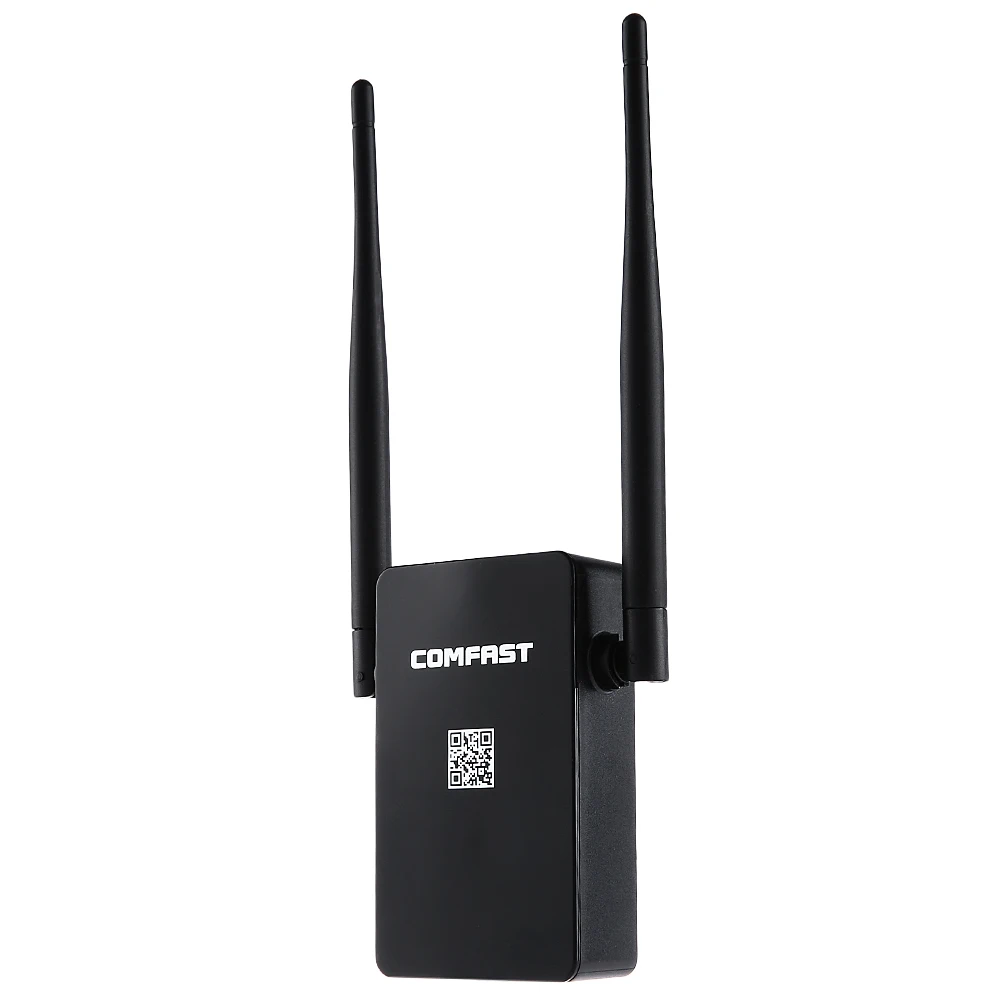

The only drawback is that the devices use their own SSID name in factory settings. This means that you can use the devices almost immediately after you plug them into the socket. To be on the safe side, I immediately bought two extenders and after a few days of use I can say that even one is more than enough.

I did not trust that these devices could really amplify the range without drastically reducing the speed, for example.Īfter a long search and comparison, I finally arrived at the TP-Link RE200. I was always quite skeptical about Wifi extenders at first. However, you do still need to select the Range Extender network each time you go back to that room with the dodgy Wi-Fi.After weeks of poor coverage on the 1st floor and attic, I went looking for a way to increase the coverage.
#COMFAST 750AC WIFI SIGNAL EXTENDER PASSWORD#
You’ve already entered the router’s Wi-Fi password into the app, so you don’t need to do this again. If you move into a room that can’t pick up the Wi-Fi from the router then you can switch to the Range Extender network to improve reception. If we go back to our smartphone’s Wi-Fi Settings panel, we can now see that we have two distinct networks - the main router (0606 Hyperoptic) on both 2.4GHz and 5.0GHz bands, and the Range Extender network, which is also on 2.4GHz and 5.0GHz bands. The TP-Link app also includes a ‘location assistant’ feature that can help you to find the best location for the range extender. However, the app is telling us that there’s a very good connection between the router and the range extender, so we can still move the range extender further away from the router without losing the connection. At the moment, we’ve got the range extender positioned about halfway between our main router and our home office where the Wi-Fi signal tends to be a bit weak. Now take a look at the range extender’s app. However, it adds ‘EXT’ on the end - 0606 Hyperoptic 1GB Fibre 5G_EXT - so that you can still tell the range extender’s new network apart from the router’s normal network. At the start of the set-up process, the range extender’s Wi-Fi network was called TP-Link_Extender on both the 2.4GHz and 5.0GHz bands.īut now that the range extender is linked to our router, the app changes the name of the range extender Wi-Fi to use the same name - 0606 Hyperoptic - as our router’s Wi-Fi network. This is where things can get a little confusing. Once this is done, the range extender is linked to the router on both Wi-Fi bands, and this allows the range extender to act as a kind of relay so that your computers and mobile devices in rooms that normally have poor Wi-Fi can now link to your router via the range extender. You’ll also need to repeat the process for the 5GHz band as well. This allows the range extender to connect its own 2.4GHz Wi-Fi signal to the 2.4GHz signal of our main router. The app now asks you to enter the password for your router’s 2.4GHz Wi-Fi network. We now need to select the router’s 2.4GHz network so that the app can link the router and the range extender together. The app will probably start with the 2.4GHz band, and you can see our 0606 Hyperoptic 2.4GHz router network right at the top of the list. The app will then scan the area and show all the other Wi-Fi networks that it has detected. Most manufacturers will ask you to enter an email address and password in order to create a private account. Now that we’ve connected our smartphone to the range extender, we can launch the TP-Link app. Alternatively, you can just tap on TP-Link_Extender_2.4GHz to connect your smartphone to the range extender. If you used WPS to get started, you may already be connected to the range extender. You can also see that the range extender is transmitting its own wi-fi signals - again on the 2.4GHz and 5.0GHz bands - called TP-Link_Extender_2.4GHz and TP-Link_Extender_5GHz. Our normal router is called 0606 Hyperoptic, and you can see that it transmits Wi-Fi on both the 2.4GHz and 5.0GHz bands. Connecting the Wi-Fi range extenderīefore you launch the extender’s app, just go into the Wi-Fi Settings panel on your smartphone or tablet.


 0 kommentar(er)
0 kommentar(er)
